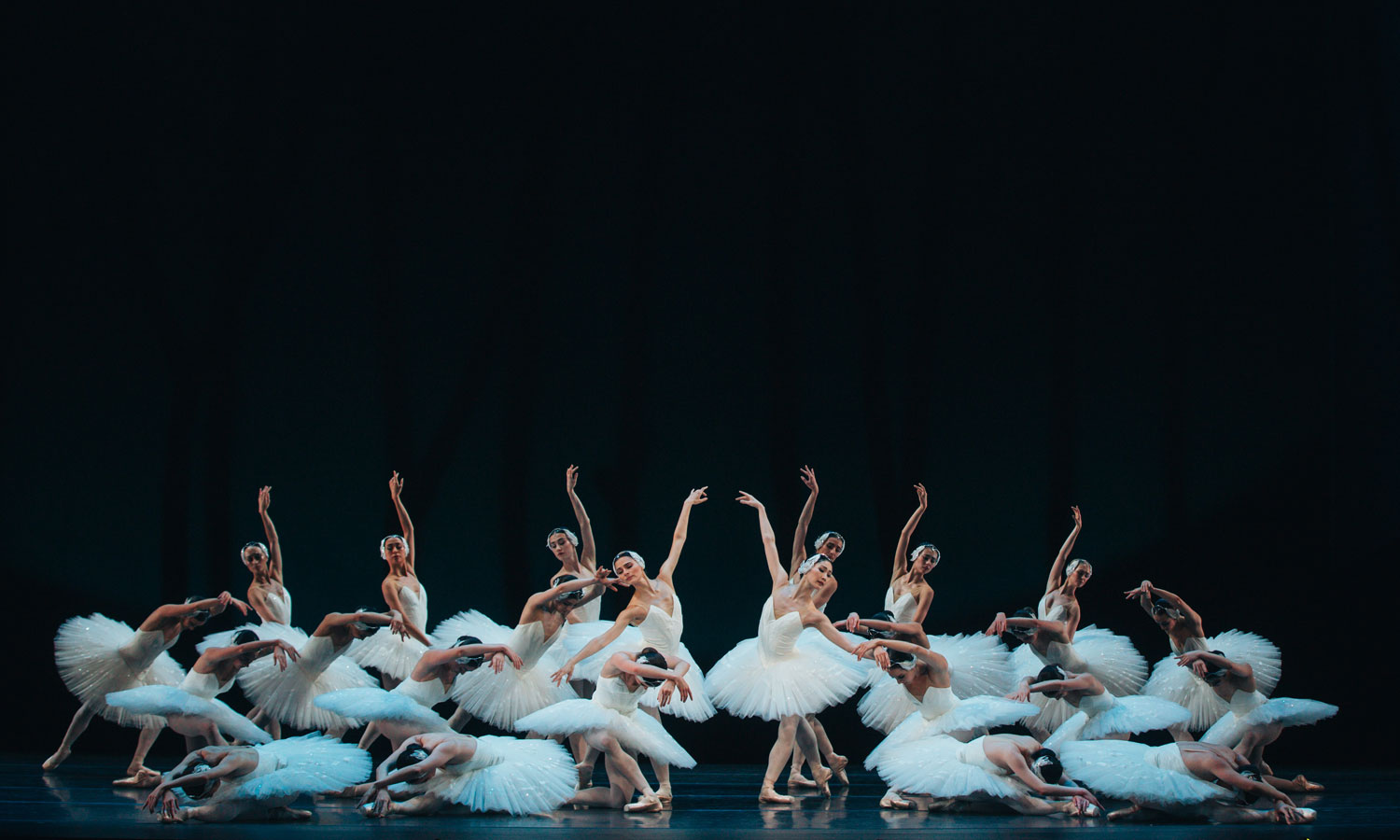The second stop on the Australian Ballet’s 60th-anniversary tour of the country, Adelaide holds a special significance for this iteration of Swan Lake, which is inspired by the late artistic director Anne Woolliams’ 1977 production. In 1983, the company revived the same Swan Lake for its 21st anniversary, with the performance at the Adelaide Festival Centre becoming the first ballet to be broadcast live on television by the ABC and still available to view online.
David Hallberg, who took over as Australian Ballet artistic director in 2021, emphasises the importance of making any classical ballet production as perfect as it can be – not just technically, but holistically – given the pressure of expectation from audiences familiar with the traditional repertoire. In reviving Woolliams’ Swan Lake, he was keen to maintain the late artistic director’s spirit, pushing the company’s dancers as far as they could go in their authenticity, interconnectedness, and emotional expression.
This production takes the exquisite beauty and authenticity of the 1988 performance – available to view online – and raises the stakes higher still.
Australian Ballet principal artist Benedicte Bemet, as Odette/Odile, is so sublime in her embodiment of both the stricken, morphing swan-princess and the trickster daughter of von Rothbart that there were audible sighs of awe from the Adelaide audience.
Technically close to perfection, most notably in her execution of the notorious 32 fouettés en pointe as well as a glorious grand adage in Act 2 as Odette, Bemet is magnificent in her swanlike expression and emotional connection with her beloved Prince Siegfried. With small shakes of the neck and forceful scapulae flexes of her wings as she preens herself out of her daytime swan embodiment, she emerges at nightfall as a human princess so beautiful that Prince Siegfried (Joseph Caley) falls instantly in love, with that love requited in that magnificent pas de deux.
The pick-and-mix nature of Swan Lake, with historic performances adding or removing certain scenes – most notably the ending – allows Hallberg to bring fresh modernity to Woolliams’ version. The omission of the first part of the story (where Odette wanders into the forest and falls under von Rothbart’s spell, leading to her grief-stricken mother crying a lake of tears) keeps the story and its characters as real and as human as possible.
The sentimentality of alternative endings, such as one where Odette and Siegfried ascend happily ever after into the heavens, is also avoided, helping to maintain a feeling of modernity and realism that is hard to maintain in what can be an overly melodramatic narrative over-egged by the emotional romanticism of Tchaikovsky’s score. The cypher of a giant wing painted with gorgeous, Dürer-like precision onto the proscenium curtain is enough to jog the memories of an audience long-familiar with the tale.

The Australian Ballet’s new production of Swan Lake is a triumph. Photo: Kate Longley
On a pared-down set featuring a plain backdrop cut with the ominous, dark shadows of the forest, the curtain rises onto the otherworldly midnight blue of the lake, the swans in traditional white tutus bowed, surrendering before the wicked spell of von Rothbart (Joseph Romancewicz).
Act 1, the celebration of Prince Siegfried’s name day that takes place in the palace gardens, comes as an earthly and luscious contrast. The busy scene of courtiers, and ladies-in-waiting in 18th-century costumes in muted, modern shades worthy of a Gainsborough painting, provides the splendour, the earthiness maintained by peasant boys and girls dancing minus point shoes, as if barefoot. Marcus Morel stands out as the Jester, his lively cheekiness keeping the scene light.
The beauty of the White Scene in Act II draws a collective gasp from the audience, the V-formation of swans ethereal and beautiful in the dark blue of night. The wondrous pas de deux between Odette and Siegfried that follows firmly stamps the performance as one of the Australian Ballet’s most memorable, and the remainder of the performance does not disappoint.
The way costume designer Mara Blumenfeld describes the construction of Odile’s Black Swan tutu seems an apt analogy for the entire production. To the audience, it looks a simple black, she says, but it is made lively by a multitude of hidden layers of glittering tulle, textured beading and subtle variations in colour.

Get InReview in your inbox – free each Saturday. Local arts and culture – covered.
Thanks for signing up to the InReview newsletter.
Like Odile’s costume, or perhaps even the frantic paddling beneath the water of a serenely gliding swan, the tremendous amount of work and depth of thought and expression behind this performance – from lighting to stage set to costume to exquisitely executed steps, enhanced by the virtuosic performance from the ASO, despite a small mis-step with the castanets in Act III – lends a profound sense of authenticity to one of the most emotionally and physically demanding works in the ballet repertoire. This is one of those memorable performances that wears effort and hard work lightly.
A credit to the power of philanthropy, the entire production has been funded by donations from supporters, including the James & Diana Ramsay Foundation, with the Adelaide season dedicated to the late James Ramsay in what would have been his centenary year. The performance certainly does them proud.
The Australian Ballet’s Swan Lake is being presented at the Festival Theatre until October 14, after which is will tour to Brisbane and Sydney.
Support local arts journalism
Your support will help us continue the important work of InReview in publishing free professional journalism that celebrates, interrogates and amplifies arts and culture in South Australia.
Donate Here




